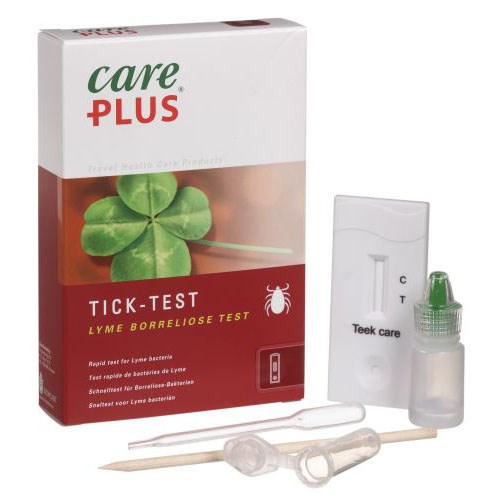As concerns over the growing presence and spread of Lyme disease in Canada mount, Dutch-based consumer and travel health company, Tropicare Canada announced that its Care Plus™ Tick-Test is now available in Canada.
The self-administered, over-the-counter test, is designed to help the public test for the presence of several Borrelia bacteria, including Borrelia burgdorferi sensu stricto (or B.burgdorferi), the predominant causative agent of Lyme disease in Canada. Borrelia burgdorferi/Borrelia bacteria is found in Western Black-Legged ticks and Black-Legged ticks species, it is transmitted to humans through the bite of infected ticks.
While not all ticks are infected with Borrelia burgdorferi, according to Health Canada surveillance data, in recent years, the number of endemic areas in Canada has been expanding — this includes both an increase in the reproducing population of ticks; and evidence of B. burgdorferi infection in that population.
Against this backdrop, The Care Plus™ Tick Test now affords Canadians a rapid and easy means to test a tick, which has attached to a human.
Within 10 minutes, the Care Plus™ Tick-Test will show a negative or positive result for the presence of Borrelia bacteria in the tick. The Care Plus™ Tick-Test also detects the presence of Borrelia garinii, Borrelia afzelii, two additional Borrelia species, common to Asia and Europe, which have also been associated with the transmission of Lyme disease through the bite of an infected tick. A 2011 clinical study compared the sensitivity and specificity of the Care Plus™ Tick-Test in detecting the presence of all three Borrelia bacteria as compared with the laboratory-based PCR (polymerase chain reaction) reference. PCR is used to reproduce (amplify) selected sections of DNA5. The study found the clinical accuracy of the Care Plus™ Tick-Test is 95.8 per cent.
Each Care Plus™ Tick-Test also includes a checklist, which together with the test result, provides important information as the public looks to safeguard their health, notably when it comes to tick bites.
Prior to adminstering the Care Plus™ Tick-Test, the user must first properly remove the entire tick (head and body) which has attached itself to a person’s body, and disinfect the area afterwards. The entire tick is then placed in the tube where it is crushed with the stick provided. It is then mixed with 10 drops of test/buffer solution using the provided pipette, and shaken as directed.
Then 4-5 drops of the liquid is transferred to the test cassette which is then laid down in a horizontal position with the test window facing upwards. A positive or negative result for the presence of the Borrelia bacteria in the tick appears within 10 minutes: one line (control line) indicates a negative result, whereas two lines (control line and test line) indicates a positive result for the bacteria. Each Tick-Test is designed for single use and includes a checklist to document symptoms and observations.
Ticks, both nymphs and adults, can attach to any part of the human body but are often found in hard-to-see areas such as the groin, armpits, and scalp. They are most likely to transmit infection after being attached for more than 24 hours of feeding because the bacteria requires time to migrate from the tick’s gut to its salivary glands. Prompt detection and removal of ticks is one of the key methods of preventing Lyme disease.
Lyme disease became nationally notifiable in 2009, and, in recent years, the number of endemic areas in Canada has been expanding. Preliminary data from disease cases reported to Health Canada increased in 2015 to 707 (preliminary data) from 128 cases in 2009. The true number of cases is expected to be higher, as cases are captured only if acquired in known endemic areas.
Blacklegged ticks are most often found in southern British Columbia, southeastern and south-central Manitoba, southern, eastern and northwestern Ontario, southern Quebec, southern New Brunswick and Grand Manan Island, and parts of Nova Scotia,



